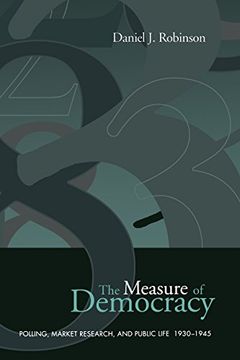Share
The Measure of Democracy: Polling, Market Research, and Public Life, 1930-1945 (Heritage) (in English)
Daniel J. Robinson (Author)
·
University Of Toronto Press
· Paperback
The Measure of Democracy: Polling, Market Research, and Public Life, 1930-1945 (Heritage) (in English) - Daniel J. Robinson
Choose the list to add your product or create one New List
✓ Product added successfully to the Wishlist.
Go to My WishlistsIt will be shipped from our warehouse between
Wednesday, May 29 and
Thursday, May 30.
You will receive it anywhere in United States between 1 and 3 business days after shipment.
Synopsis "The Measure of Democracy: Polling, Market Research, and Public Life, 1930-1945 (Heritage) (in English)"
Politicians, government officials, and public relations officers lean heavily on polling when fashioning public policy. Proponents say this is for the best, arguing that surveys bring the views of citizens closer to civic officials. Critics decry polling's promotion of sycophantic politicians who pander to the whims of public sentiment, or, conversely, the use of surveys by special interest groups to thwart the majority will. Similar claims and criticisms were made during the early days of polling. When George Gallup began polling Americans in 1935, he heralded it as a bold step in popular democracy. The views of ordinary citizens could now be heard alongside those of organized interest groups. When brought to Canada in 1941, the Gallup Poll promised similar democratic rejuvenation. In actual practice, traditionally disadvantaged constituencies such as women, the poor, French Canadians, and African Americans were often heavily underrepresented in Gallup surveys. Preoccupied with election forecasting, Gallup pollsters undercounted social groups thought less likely or unable to vote, leading to a considerable gap between the polling results of the sampled polity and the opinions of the general public. Examining the origins and early years of public opinion polling in Canada, Robinson situates polling within the larger context of its forerunners – market research surveys and American opinion polling – and charts its growth until its first uses by political parties.

